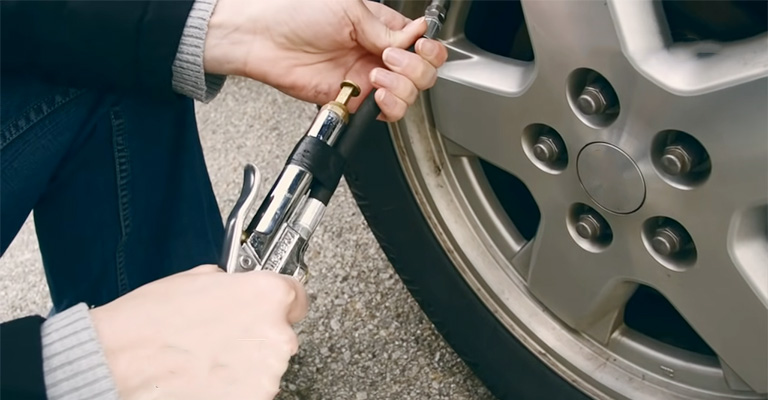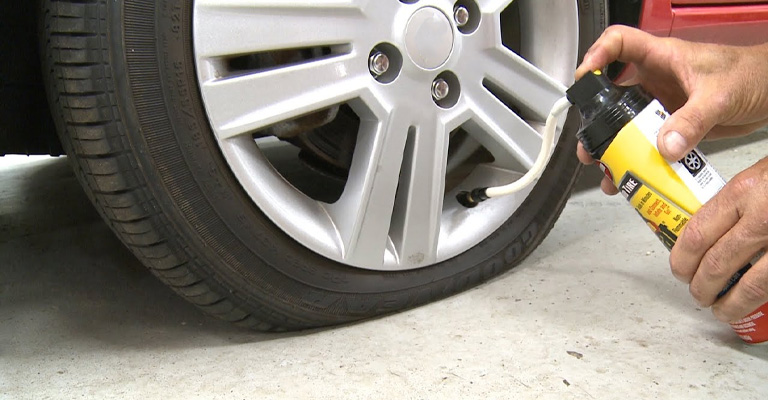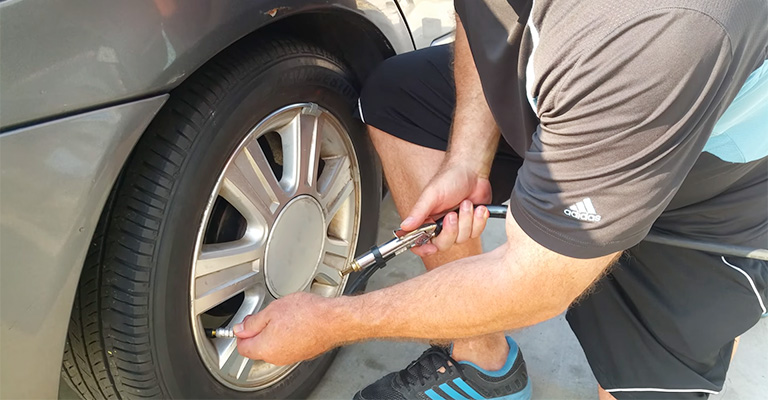Have you ever found yourself at a gas station with a tire that’s low on air? Trying to figure out how to put air in your tire can be frustrating, especially if you’ve never done it before.
But don’t worry; learning how to put air in your tire at a gas station is a quick and easy process. This article will walk you through the steps to inflate your tire properly and get back on the road safely.
So, whether you’re a new driver or just need a refresher, read on to learn how to put air in your tire at a gas station like a pro.
Regularly checking your car’s tire pressure is just as important as checking the engine oil. Finding a tire pressure gauge at any automotive parts store is never a problem; some of them are even free to take home.
You can use a tire compressor at most petrol stations for a few dollars if the pressure in your tires is below what the manufacturer recommends. There is a possibility that it will be simpler than you thought.

How Can A Gas Station Air Pump Help You?
Tire pressure can likely decrease at any time if you do not regularly check tire pressure. Below we discuss several benefits associated with relying on gas station air pumps.
You Can Save Time
You won’t waste much time waiting around at the gas station because the air pump operates fast.
It May Be Of Immediate Help

It is in the middle of a road when you notice your tires are deflating. Choosing a gas station with an air pump near you is the best option instead of returning home. You should fill up your tires at a gas station instead of waiting in line at a tire center.
You Can Use Air Pumps For Free
A free air pump might save you some money in the first place. The law even mandates that public air pumps be provided free of charge in some jurisdictions.
Using The Gas Station Air Pump

You will notice the orange dashboard light flashing when the air pressure in your tires drops, which is a sign that the tires have low pressure.
The light will not seem alarming while the vehicle is being driven; however, the tires must be inflated within three to four days. It is still possible to drive the vehicle locally (not at highway speeds).
Fill your tires with a hand pump, not a bicycle pump or any other electric air pump. Consequently, the tires’ air valves may break or become damaged and even damage the pump.
You don’t have to take your car to the mechanic. You may do this by taking it to your nearest gas station, which offers an air pump.
Depending on the gas station, you may need to bring a handful of quarters with you for air use. Some gasoline stations offer free air.
- Pull into the gas station parking lot. Most likely, the air pump will be on the right or left side of the parking area, separate from the gas pumps.
- Drive up to the air pump on the side of your car. Ideally, you should have at least one foot of space between your car and the curb. The high or low tire will determine which side you need the pump on (driver’s or passenger’s). Make sure your car is positioned, so the pump is in the middle of the car.
- Park your car. You don’t need to turn off your vehicle.
- Open your car door. If you are exiting the vehicle, make sure you check the inner frame of your driver-side car door. You should find a manufacturer’s sticker on your tires telling you what psi (pounds per square inch) you need. Front tires will generally have a higher psi rating than back tires. You should lock the door of your car.
- Walk over to the air pump, and pick up the spout. It is possible to have two spouts on the pump. Don’t do so if you need to use more than one spout. The pump doesn’t need quarters if you don’t have any. The pump should not take more than twenty-five to thirty minutes to operate. If the pump is free, you will hear a series of blasts, then a stream of air will flow into your tire until you insert the spout. There is a feeling of coldness and slight wetness in the air; it is compressed, which is the sensation one expects.
- Set the needed psi rating using the buttons on the pump’s screen. In some cases, you may have to use up-and-down buttons or type in the number on a keypad. It is possible to find free pumps that don’t require you to set the psi rating and have a sensor that helps you know when the tire is sufficiently inflated.
- When you have the spout in hand (it is coiled and can be stretched as necessary), crouch by the low tire. You don’t need to worry if the cord contacts your car.
- Remove the air valve cap from the inside of the tire. A black (or green) cap that looks like a thimble will be on the other end (It may be dirty, but you don’t need to clean it). If you don’t know where the cap is, place it near you, where it’s easy to find, or hold it in your empty hand for reference.
- Connect the pump spout to the air valve. Upon inflation, the air will automatically flow into the tire.
- Replace the valve cap once the spout from the valve has been removed from the valve, and the machine detects that your tire is sufficiently filled (some pumps will emit a beep while others will show you the rating as it rises).
- In general, it is recommended to fill the other tires (even if they are not low yet) since you are already at the pump. If you wish, repeat steps 6-10 with the other tires.
- When finished, replace the spout on the pump. Whenever more time has been paid for what has been used, it is not necessary to stop the airflow–refunds will not be given at the air pump.
- Unlock your door, enter your car, and check to see if the orange light on your dashboard has turned off. Ensure that you correctly set the pressure in your tires if the light remains on. In the same way, make sure that you have inflated the correct tire(s). It is also a good idea to double-check with your mechanic that everything went smoothly.
- You are all set to go about the rest of your day.
It is important to know that not all air hose gauges at the gas station are 100% accurate, but in any case, you shouldn’t overinflate your tire.
There can be distortion in the tire shape, which can cause more wear and tear and decreased traction.
Press the pin of the tire valve in the nozzle to release some air from the tire. The pressure in your car tires may take some practice to understand, but you’ll get the hang of it!
How Much Air Should I Put in My Tires?

How much air do you need in your tires? You know how to add it, but how much do you need to put out? In the case of a newer vehicle, the answer is on the dashboard!
On the inside of the driver’s door should be a sticker with the recommended tire pressure for your car. In case you don’t have a sticker, check your owner’s manual. As a general rule, most vehicles recommend 32 to 35 pounds per square inch.
To get the most accurate reading, check the tire pressure after the car has cooled off. When putting air in your tires, keep in mind the following:
- Don’t inflate your tires to the psi given on the actual tire. This number indicates the maximum amount of pressure the tire can hold — not its recommended psi.
- You can usually tell that you’ve overinflated your tires when the ride quality is bouncy, and the car is harder to handle.
- Underinflated tires can lead to faster tire wear and tear.
Filling Your Tires in the Winter
There can be no doubt that winters are harsh and cold. As a result, your clothes will impact the way your tires perform, as well.
Tire pressure is reduced by cold weather, resulting in less fuel economy, longer braking times, and increased skidding risks.
If you live in a cold environment, make sure your tires are properly inflated and have sufficient air during cold weather. Depending on how often you refill, you might need to do so more often.
Final Words
It is important to remember that sudden or uneven wear from under and over-inflation can result in serious internal damage, possibly resulting in a sudden tire collapse that might result in catastrophic injury.
Stop by any service center if you feel uneasy filling your own tires at a gas station. Their technicians will be happy to fill your tires for you.

Leave a Reply